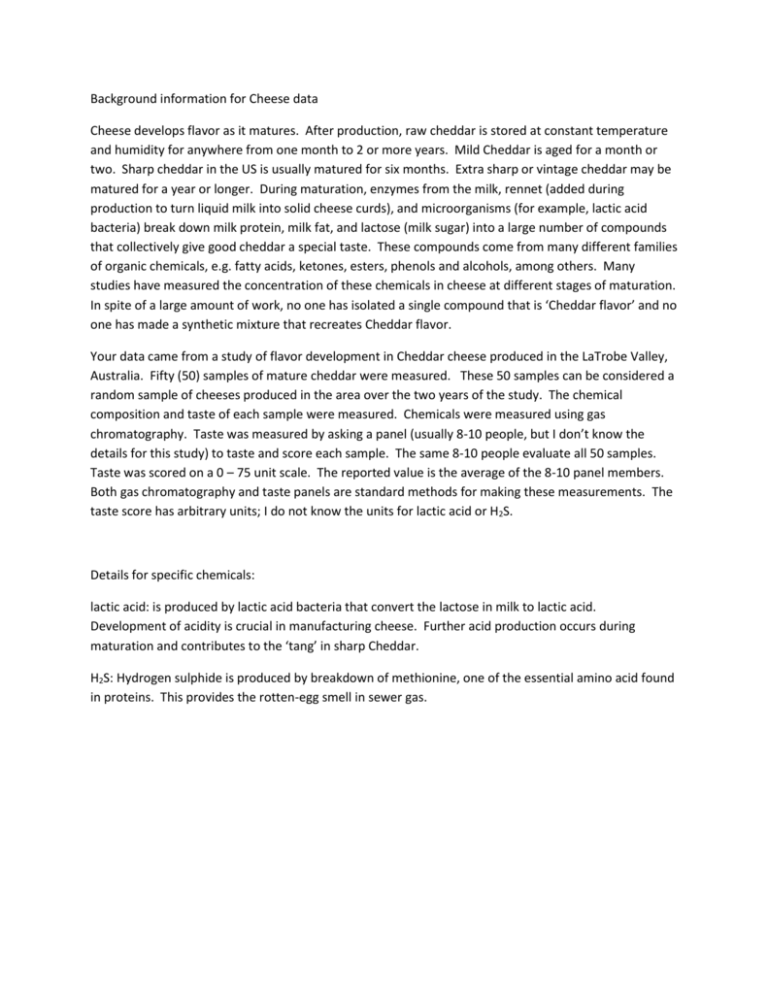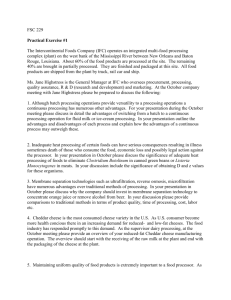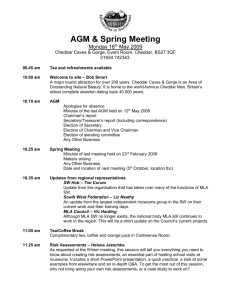Information about Cheese data
advertisement

Background information for Cheese data Cheese develops flavor as it matures. After production, raw cheddar is stored at constant temperature and humidity for anywhere from one month to 2 or more years. Mild Cheddar is aged for a month or two. Sharp cheddar in the US is usually matured for six months. Extra sharp or vintage cheddar may be matured for a year or longer. During maturation, enzymes from the milk, rennet (added during production to turn liquid milk into solid cheese curds), and microorganisms (for example, lactic acid bacteria) break down milk protein, milk fat, and lactose (milk sugar) into a large number of compounds that collectively give good cheddar a special taste. These compounds come from many different families of organic chemicals, e.g. fatty acids, ketones, esters, phenols and alcohols, among others. Many studies have measured the concentration of these chemicals in cheese at different stages of maturation. In spite of a large amount of work, no one has isolated a single compound that is ‘Cheddar flavor’ and no one has made a synthetic mixture that recreates Cheddar flavor. Your data came from a study of flavor development in Cheddar cheese produced in the LaTrobe Valley, Australia. Fifty (50) samples of mature cheddar were measured. These 50 samples can be considered a random sample of cheeses produced in the area over the two years of the study. The chemical composition and taste of each sample were measured. Chemicals were measured using gas chromatography. Taste was measured by asking a panel (usually 8-10 people, but I don’t know the details for this study) to taste and score each sample. The same 8-10 people evaluate all 50 samples. Taste was scored on a 0 – 75 unit scale. The reported value is the average of the 8-10 panel members. Both gas chromatography and taste panels are standard methods for making these measurements. The taste score has arbitrary units; I do not know the units for lactic acid or H2S. Details for specific chemicals: lactic acid: is produced by lactic acid bacteria that convert the lactose in milk to lactic acid. Development of acidity is crucial in manufacturing cheese. Further acid production occurs during maturation and contributes to the ‘tang’ in sharp Cheddar. H2S: Hydrogen sulphide is produced by breakdown of methionine, one of the essential amino acid found in proteins. This provides the rotten-egg smell in sewer gas.











